時(shí)間:2022-11-13 23:28:57
引言:易發(fā)表網(wǎng)憑借豐富的文秘實(shí)踐,為您精心挑選了九篇文化翻譯論文范例。如需獲取更多原創(chuàng)內(nèi)容,可隨時(shí)聯(lián)系我們的客服老師。
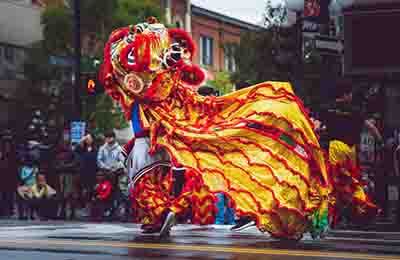
語(yǔ)言是文化的載體,同時(shí)又是文化的重要組成部分。而語(yǔ)詞又是語(yǔ)言中最活躍的因素,最敏感地反映了生活和社會(huì)思想的變化,是語(yǔ)言中最能反映文化特征的部分。所謂語(yǔ)詞就是指詞和詞組,詞組的范圍包括各種固定說(shuō)法、習(xí)慣用語(yǔ)和習(xí)俗語(yǔ),語(yǔ)詞都有:音義的理由和來(lái)源,語(yǔ)詞的產(chǎn)生、變異和都包含著豐富、復(fù)雜的文化信息,如地理環(huán)境、社會(huì)、、風(fēng)俗民情、、審美取向、價(jià)值觀念及思維方式等等,其中最能體現(xiàn)濃厚的民族色彩和鮮明:的文化個(gè)性,體現(xiàn)不同民族,不同歷史文化的特點(diǎn),使不同民族的語(yǔ)言呈現(xiàn)出不同的特性。語(yǔ)詞的翻譯要求譯者在廣泛地、準(zhǔn)確地了解他國(guó)文化中的觀念、信仰、習(xí)俗、價(jià)值標(biāo)準(zhǔn)等方面的同時(shí),忠實(shí)傳達(dá)本國(guó)文化的價(jià)值與靈魂,才能真正做到不同文化間的交流論文。
二、文化語(yǔ)境——語(yǔ)詞翻譯的重要因素
美國(guó)學(xué)者D.A.Swinnty的實(shí)驗(yàn)表明,語(yǔ)境是影響詞一匯提取的主要因素,忽略了語(yǔ)詞詞義提取時(shí)意義與語(yǔ)境的結(jié)合,不能達(dá)到對(duì)句子的充分理解,就不能對(duì)語(yǔ)詞在語(yǔ)境中的意義正確翻譯。
語(yǔ)言界語(yǔ)境最早始于倫敦功能學(xué)派創(chuàng)始人馬林諾夫斯基對(duì)語(yǔ)境的定義,他認(rèn)為語(yǔ)境可分為情景語(yǔ)境和文化語(yǔ)境。情景語(yǔ)境是指語(yǔ)言行為發(fā)出時(shí)周?chē)闆r,事情的性質(zhì),參與者的關(guān)系、地點(diǎn)、方式等。文化語(yǔ)境是指任何一個(gè)語(yǔ)言使用所屬的某個(gè)特定的言語(yǔ)社團(tuán),以及每個(gè)言語(yǔ)社團(tuán)長(zhǎng)期形成的歷史、文化、風(fēng)俗、事情、習(xí)俗、價(jià)值標(biāo)準(zhǔn)和思維方式等。由于不同民族所處的地理、人文歷史和文化環(huán)境不同,各民族的人們對(duì)外部世界反映產(chǎn)生的印象和概念也會(huì)產(chǎn)生差異,所以不同民族文化背景使人們對(duì)事物會(huì)產(chǎn)生不同的認(rèn)知概念,因而產(chǎn)生了包含不同文化意義的語(yǔ)詞。隨著語(yǔ)言的發(fā)展,社會(huì)文化因素不斷滲透到語(yǔ)詞選擇和定型的各個(gè)環(huán)節(jié),語(yǔ)詞的特定音義是一個(gè)民族各文化因素的折射和呈現(xiàn),能夠細(xì)致、全面地體現(xiàn)民族文化的特性。因此,語(yǔ)詞的翻譯依賴(lài)著它本身所存在的語(yǔ)言文化環(huán)境,文化語(yǔ)境包含的諸多因素,如地理環(huán)境、社會(huì)歷史、政治經(jīng)濟(jì)、風(fēng)俗民情、、審美取向、價(jià)值觀念及思維方式等等直接影響著語(yǔ)詞的翻譯。
三、文化語(yǔ)境與語(yǔ)詞翻譯
翻譯學(xué)的目的論認(rèn)為,翻譯是人類(lèi)行為研究的范疇,人類(lèi)的交際受語(yǔ)言環(huán)境的制約,而語(yǔ)言環(huán)境又根植于文化習(xí)慣,因此翻譯必然受到譯出文化和譯入文化的影響。可見(jiàn),不同的文化語(yǔ)境決定著語(yǔ)詞翻譯中詞義的提取,也體現(xiàn)著譯者對(duì)不同文化的判斷和理解。本文將探討文化語(yǔ)境中諸多因素對(duì)語(yǔ)詞翻譯的影響,以及相應(yīng)的翻譯。
1.地理環(huán)境差異與語(yǔ)詞翻譯。地理文化是指所處的地理環(huán)境而形成的文化。由于各民族生活空間不同,因而自然環(huán)境各方面的差異影響不同民族對(duì)同一事物或現(xiàn)象的看法各有不同。特定的地理文化賦予了語(yǔ)詞特定的意義。
2.社會(huì)歷史差異與語(yǔ)詞翻譯。歷史文化是特定歷史發(fā)展進(jìn)程和社會(huì)遺產(chǎn)的沉淀所形成的文化,各民族的歷史發(fā)展不同,因而各自都有含有特定的人物和事件的語(yǔ)詞來(lái)體現(xiàn)本民族鮮明的歷史文化色彩。例如,中“tomeetone’sWaterloo''''’(遭遇滑鐵盧)是源于十九世紀(jì)拿破侖在比利時(shí)小城滑鐵盧慘敗一事,漢語(yǔ)中“敗走麥城”是指古時(shí)三國(guó)的蜀國(guó)名將關(guān)羽被打敗退兵麥城一事,兩個(gè)語(yǔ)詞分別來(lái)源于不同的歷史事件,但喻義相同,都是指慘遭失敗。因此這類(lèi)語(yǔ)詞的翻譯需要了解各民族歷史文化才能使譯文更具文化個(gè)性。
3、習(xí)俗人情差異與語(yǔ)詞翻譯。語(yǔ)言來(lái)源于生活,生活習(xí)俗與人情世故在一定程度上制約著語(yǔ)言的表達(dá)系統(tǒng)。例如:數(shù)詞“八”在漢語(yǔ)中是現(xiàn)今最受人們喜愛(ài)的數(shù)額——因?yàn)槠浒l(fā)音與“發(fā)”諧音,迎合人們發(fā)財(cái)致富的心理,而英語(yǔ)中“eight''''’則沒(méi)有這種意義。
4.差異。對(duì)人們的生活有著重要的,特定的產(chǎn)生了語(yǔ)詞的特定含義。中西方的不同,也影響著英漢語(yǔ)詞的翻譯。在西方,以基督教為主的宗教文化深刻影響著人們的語(yǔ)言表達(dá),基督教產(chǎn)生時(shí),歐洲大陸處于四分五裂的狀態(tài),世俗的王權(quán)只有超越一切世俗力量之上的上帝才能收服人們的“野性”,于是基督教應(yīng)運(yùn)而生,人們的語(yǔ)言也深深的打上了民族宗教色彩的烙印。如:“Manproposes.Goddisposes''''’(由人提議,上帝決斷)“Godhelpsthosewhohelpsthemselves''''’(天佑自救者)。在以佛教為主導(dǎo)的傳統(tǒng)宗教文化中,“老天爺”成了佛教徒心目中的天神。許多語(yǔ)詞來(lái)源于佛教、道教。如“三生有幸”中的“三生”源于佛教,指前生、今生、來(lái)生,該詞語(yǔ)用來(lái)形容機(jī)遇非常難得,可見(jiàn)宗教文化是構(gòu)成英漢語(yǔ)言各自特色的重要方面。了解了宗教文化的差異,就能更準(zhǔn)確地表達(dá)語(yǔ)詞的文化意義。
5.神話(huà)傳說(shuō)與經(jīng)典著作的差異。不同民族的神話(huà)傳說(shuō)與經(jīng)典作品中產(chǎn)生了許許多多的習(xí)語(yǔ)與典故,反映了民族風(fēng)味、世態(tài),使各民族的語(yǔ)言充滿(mǎn)了情趣與活力,具有獨(dú)特的表現(xiàn)力。如中:“Thinkwiththewise,buttalkwiththevulgar''''’(與智者同思,與俗子同語(yǔ))出自古希臘格言:“swansong''''’是根據(jù)西方傳說(shuō)swan(天鵝)臨死時(shí)發(fā)出美妙的歌聲,用來(lái)比喻“詩(shī)人、家等的最后的作品”。又如“Sourgrapes''''’(酸葡萄)出自《伊索寓言》,比喻“可要可不及的東西”,漢語(yǔ)中有“萬(wàn)事俱行,只欠東風(fēng)”、“逼上梁山”、“葉公好龍”等,以上例子說(shuō)明在民族各自豐富的文化遺產(chǎn)中產(chǎn)生的語(yǔ)詞包含著豐富的民族文化意味,構(gòu)成了各民族語(yǔ)言表達(dá)方式的鮮明獨(dú)特性,是其他語(yǔ)言文化所不能替代的。在翻譯過(guò)程中應(yīng)尊重各民族文化詞語(yǔ)的特點(diǎn)與個(gè)性,保留語(yǔ)言存在和表現(xiàn)的形式。
關(guān)鍵詞:文化;翻譯;異化;歸化
1文化和翻譯
1.1文化和翻譯的關(guān)系
如今,翻譯和文化之間的聯(lián)系越來(lái)越緊密。我們?cè)谶@里提到的文化是指廣義上的文化,不是指如城市、組織,學(xué)校等實(shí)體,而是指如思想、習(xí)俗、家庭構(gòu)成,語(yǔ)言等非實(shí)物的東西。簡(jiǎn)單說(shuō)來(lái),文化就是指一個(gè)社會(huì)的整個(gè)存在的方式,人們的生活行為方式。
正是由于翻譯涉及到兩種文化兩種語(yǔ)言之間的轉(zhuǎn)換,自然而然文化和語(yǔ)言二者的關(guān)系就出現(xiàn)了。語(yǔ)言和文化是不可分割的,沒(méi)有語(yǔ)言,文化就無(wú)法存在和發(fā)展;而語(yǔ)言只有在反映某種文化時(shí)才具備自身的意義。因?yàn)榉g首先要處理的就是文字,而文字只有在與文化相聯(lián)系的時(shí)候才被賦予真正的意義,這就要求譯者在處理文字問(wèn)題的時(shí)候要深層次的理解文化內(nèi)涵。
由于人類(lèi)社會(huì)要通過(guò)翻譯來(lái)進(jìn)行文化交流,在此基礎(chǔ)上,我們應(yīng)該重視語(yǔ)言中的文化因素,尤其是在面對(duì)翻譯當(dāng)中的一些特殊問(wèn)題的時(shí)候,通過(guò)在翻譯理論的研究當(dāng)中廣泛全面、系統(tǒng)、具體的對(duì)比區(qū)別其相同點(diǎn)和不同點(diǎn),識(shí)別共通之處,辨別特殊性。翻譯不是簡(jiǎn)單的將語(yǔ)言的傳統(tǒng)意義進(jìn)行轉(zhuǎn)換,而是最大限度的將原著中所有的文化韻味輸送出去,傳達(dá)各種文化信號(hào),重現(xiàn)不同國(guó)家中根深蒂固的文化背景。
1.2翻譯的目的
大致說(shuō)來(lái),翻譯的目的就是消除或減少原著和譯本之間的差別。的確,在翻譯中會(huì)遇到一些巧合,就是相同的語(yǔ)言規(guī)則適用于兩種不同的語(yǔ)言體系,但相對(duì)而言,語(yǔ)言形成完全相同的這種情況并不多見(jiàn)。
2異化與歸化
2.1定義和要求
LaurenceVenuti將涉及文化差異的不同的翻譯處理方式劃為兩類(lèi):異化和歸化。異化是以源語(yǔ)言的文化為中心(SLculture-oriented),而歸化則以目標(biāo)語(yǔ)言的文化為中心(TLculture-oriented)。
這兩種譯法的雙方都有各自的倡導(dǎo)者和觀點(diǎn)。既然我們都知道語(yǔ)言與文化是緊密聯(lián)系的,因此當(dāng)我們進(jìn)行翻譯時(shí),文化因素應(yīng)該跟語(yǔ)言本身受到同等重視。而如何才能使雙方和諧統(tǒng)一是我們考慮的首要問(wèn)題。
2.2論點(diǎn)
在何時(shí)何地采用異化還是歸化是個(gè)問(wèn)題。在英語(yǔ)和漢語(yǔ)中就有很多的文化差異。在各自的語(yǔ)言中存在大量發(fā)源于它們各自的民族的獨(dú)特文化的表達(dá)方式,如典故、宗教用語(yǔ)、文化用詞、習(xí)語(yǔ)和新詞匯等,它們都與源語(yǔ)言國(guó)文化有著緊密的聯(lián)系。考慮到這一點(diǎn),以下列舉出一些關(guān)于異化和歸化這兩種翻譯方式的例子和解決方法。
3例子和方法
3.1典故
對(duì)于一些反映先進(jìn)文化和被經(jīng)常用到的的典故,我們可以采用異化的翻譯方式以此了解和熟悉其獨(dú)特文化。
很多與人物事件有關(guān)的典故都來(lái)自于英國(guó)文學(xué)這座寶庫(kù),特別是莎士比亞的作品中。莎士比亞戲劇當(dāng)中的很多角色都代表著跟他們有著相同特點(diǎn)或性格特征的人。所以如果說(shuō)一個(gè)人是“羅密歐”就意味著這個(gè)人年輕英俊,熱情激昂,神采奕奕,并且很有女人緣。如果稱(chēng)一個(gè)人為“豬八戒”的話(huà)就表示他跟《西游記》中那頭粗魯、愛(ài)尋歡作樂(lè)、行為怪異但又有些可愛(ài)的豬有些相似之處。還有很多來(lái)自于莎士比亞戲劇和后英美文學(xué)的角色和名字成為了家喻戶(hù)曉的詞,如“夏洛克”、“葛朗臺(tái)”等等。
Whokeepscompanywiththewolf,willlearntohowl.——近狼者會(huì)嗷
Toweepcrocodile''''stear——流鱷魚(yú)眼淚
3.2宗教用語(yǔ)
宗教也是文化傳播的一個(gè)途徑。它是一個(gè)民族的信仰問(wèn)題,絕不可濫用和誤用。因此要遵從他們的信仰,異化這種方式在宗教用語(yǔ)的翻譯中起到了顯著的作用。在講英語(yǔ)的國(guó)家中,基督教占主要地位,因此不難發(fā)現(xiàn)很多對(duì)人物、事件的引用是源于基督教的圣書(shū)——《圣經(jīng)》:
Amessiah————-救世主彌塞爾
在中國(guó),佛教和道教也是長(zhǎng)期流傳的文化的來(lái)源:
臨時(shí)抱佛腳——toembraceBuddha''''sfeetinone''''shourofneed————-seekhelpattheleastmoment.
對(duì)歸化處理不當(dāng)會(huì)造成沖突和目標(biāo)語(yǔ)言的讀者對(duì)文化的錯(cuò)誤理解,例如:
“TherewassomerealfalsitywhentheycametotreattheGoddessofMercyasafashionplateofthecourttoday.”
譯法一:中國(guó)人漸漸把慈悲女神描繪成穿著時(shí)髦的宮廷貴婦形象,這可嚴(yán)重走樣了。
譯法二:中國(guó)人漸漸把大慈大悲觀世音菩薩描繪成穿著時(shí)髦的宮廷貴婦形象,這可嚴(yán)重走樣了。
佛教是在中國(guó)流傳最廣,影響最深遠(yuǎn)的宗教,但是譯法一很難讓人能理解“慈悲女神”就是他們所熟知的“觀音菩薩”,因?yàn)榉鸾讨械娜宋镆呀?jīng)被換成了希臘神話(huà)和羅馬神話(huà)中的人物。
3.3文化用詞
在各種文化中都有一些獨(dú)特的詞語(yǔ)或短語(yǔ)。也就是說(shuō),這個(gè)詞具有文化特征并且能把這種文化特征帶到某個(gè)社會(huì)文化的群體當(dāng)中去。當(dāng)它被用于跨文化交流時(shí),就稱(chēng)之為獨(dú)特文化詞或文化用詞。
因?yàn)樵凑Z(yǔ)言和目標(biāo)語(yǔ)言之間無(wú)法完全等同,我們最好采用異化的翻譯方式來(lái)履行翻譯的使命。
舉例如下:關(guān)于物質(zhì)文化,西方國(guó)家有我們以前從未聽(tīng)說(shuō)的sandwich和hotdog,譯者將它們介紹給我們中國(guó)人就稱(chēng)之為“三明治”和“熱狗”。而中國(guó)的餃子和豆腐被引進(jìn)國(guó)外就稱(chēng)之為jiaozi和tofu.還如,中國(guó)有“旗袍”cheong-sam;英國(guó)有swallowtail“燕尾服”;美國(guó)有jacket“夾克”。
關(guān)于社會(huì)文化,外國(guó)人都知道“中國(guó)功夫”Chinesekongfu.在英語(yǔ)中,有他們的church“教堂”andmissionary“傳教士”;而在漢語(yǔ)中有“道教”Taoism和“陰陽(yáng)”yinyang。
3.4習(xí)語(yǔ)
習(xí)語(yǔ)是指人們長(zhǎng)期以來(lái)習(xí)用的、形式簡(jiǎn)潔而意思精辟的、定型的詞組或短語(yǔ)。在英漢翻譯當(dāng)中有兩類(lèi)習(xí)語(yǔ)。一類(lèi)是在一個(gè)相似的文化背景下漸漸形成的,通常情況下將它們歸化雙方都不會(huì)引起文化誤解,如:
Selfdo,selfhave——自作自受
雨后春筍——springuplikemushroomsafteravernal
而有些習(xí)語(yǔ)用異化的方式更為恰當(dāng),如:
Armedtotheteeth——武裝到牙齒
3.5新詞匯
新詞是指隨著一個(gè)社會(huì)中最近或當(dāng)時(shí)發(fā)生的事件,出現(xiàn)的人物,發(fā)明的產(chǎn)品等的出現(xiàn)而產(chǎn)生的新的說(shuō)法。
在英語(yǔ)當(dāng)中有的新詞匯在中文中沒(méi)有對(duì)等物,我們就要再充分理解原生詞這個(gè)首要條件下根據(jù)中文的規(guī)則想辦法創(chuàng)造出與他們相對(duì)應(yīng)的詞語(yǔ)。這種情況就要采取歸化的翻譯方法:
back-to-back——雙往返機(jī)票
thumbtribe——手機(jī)一族
還有一些新生詞匯由于解釋起來(lái)過(guò)于復(fù)雜,不容易采用歸化的翻譯方式就最好異化這些詞:
bungiejumping——蹦極跳
Namitechnique——納米技術(shù)
參考文獻(xiàn)
[1]Eugene,Nida.Language,CultureandTranslation[J].外國(guó)語(yǔ),1993,(3).
[2]郭建中.翻譯中的文化因素:歸化與異化[J].外國(guó)語(yǔ),1998,(2).
[3]李慶生,郭著章.英漢互譯使實(shí)用教程[M].武漢:武漢大學(xué)出版社,1996.
雖然旅游資料的翻譯應(yīng)該以讀者的文化為主,以譯文為重,但是外國(guó)游客感興趣的是旅游資料中與其不同的文化,因此在翻譯的過(guò)程中還應(yīng)在讀者接受范圍內(nèi)最大程度保留原文的文化信息。如果譯文不作任何改變照直翻譯,不但令外國(guó)游客不知何意,而且還會(huì)失去閱讀的興趣,達(dá)不到翻譯的目的。那么譯者應(yīng)適當(dāng)?shù)卦鰷p文化點(diǎn)來(lái)讓讀者更容易接受,所以采用刪減、釋義、類(lèi)比、改譯等方法。
典故是旅游資料中一種常見(jiàn)的文化現(xiàn)象,出自歷史事件、寓言、神話(huà)、傳說(shuō)、諺語(yǔ)、某些作品等。其特點(diǎn)是源遠(yuǎn)流長(zhǎng),富含較濃厚的民族色彩,因結(jié)構(gòu)固定,義在言外,已失去指稱(chēng)意義,只有語(yǔ)用意義,在直譯以后讀者無(wú)法理解典故含義時(shí),要對(duì)典故作適當(dāng)轉(zhuǎn)換。采取直譯加注其背景知識(shí)和解釋原文含義,避免損失其民族色彩形象性和聯(lián)想意義。意譯向譯文讀者忠實(shí)地轉(zhuǎn)達(dá)原文信息,有時(shí)要作適當(dāng)?shù)奈幕D(zhuǎn)換。如:“玉兔”為什么英譯成“MoonRabbit”而不譯成“JadeRabbit”?讓人誤認(rèn)為是玉做成的兔子。
旅游景點(diǎn)的翻譯
旅游景點(diǎn)的翻譯在旅游文化的介紹中起著非常重要的作用。要求譯者對(duì)景點(diǎn)的歷史文化背景進(jìn)行充分的學(xué)習(xí),有條件的最好作實(shí)事求是的實(shí)地考察。想辦法拉近外國(guó)游客與中國(guó)文化的距離,使他們產(chǎn)生親近感,激發(fā)他們的游興。中國(guó)悠久歷史中有許多著名事件,英雄人物,典故傳奇等,旅游資料中經(jīng)常提到的許多風(fēng)景名勝往往與他們有關(guān)。不增加說(shuō)明,一般外國(guó)游客就無(wú)法理解。有時(shí)候在翻譯旅游資料中刪減是十分必要的。因?yàn)榇蠖鄶?shù)外國(guó)游客閱讀這些資料都是為了了解中國(guó)的風(fēng)土人情,增加一些旅游興趣。
值得一提的就是漢語(yǔ)中一詞多義的現(xiàn)象,在翻譯選詞時(shí)更應(yīng)該慎重。比如說(shuō)“樓”在英語(yǔ)中有許多個(gè)對(duì)應(yīng)語(yǔ),并不是可以隨便調(diào)用的。浩然樓譯為HaoranMansion,是因?yàn)檫@是一座公館大樓式的建筑,岳陽(yáng)樓譯為YueyangTower,因?yàn)槠湫螤铑?lèi)似塔,而天安門(mén)城樓是眾所周知的類(lèi)似檢閱臺(tái)、主席臺(tái)的建筑,故譯為theTianAnMenRostrum。
飲食文化的翻譯
我國(guó)由于歷史和地域的不同,形成眾多菜系,在翻譯時(shí)充分考慮它的中、西文化差異、其原料成份及烹調(diào)方法等。如將韭菜合子譯成ChiveBox就會(huì)讓人費(fèi)解,何為“ChiveBox”?看到“盒子”就直接對(duì)應(yīng)了“box”?可見(jiàn)譯者在翻譯菜單時(shí)對(duì)這種傳統(tǒng)小吃本身還不夠了解。應(yīng)該如何解決這個(gè)問(wèn)題呢?筆者不禁想到了“dumpling”一詞,其所指不僅限于“餃子”,還可以指其它食品,如:粽子、水餃、鍋貼等,蝦餃可譯為ShrimpDumpling,素菜鍋貼可譯為VegetableDump1ing。此類(lèi)英譯名現(xiàn)已廣為接受,而韭菜合子的形狀與餃子相似,體積較大,看似扁平,dumpling一詞也可適用。綜合考慮韭菜合子的制作方式,制作原料,筆者建議譯為FriedLeekDumplings。
在對(duì)我國(guó)傳統(tǒng)飲食文化的翻譯時(shí),可采用直譯:烹飪方法+原料名,如:清蒸桂魚(yú)SteamedMandarinFish、回鍋肉Twice-cookedPork、燉牛肉StewedBeef。音譯+意譯:麻婆豆腐BeanCurdSichuanStyle、西苑飯店XiyuanHotel。意譯:紅燒獅子頭BraisedMetBallswithBrawnSauce、棕子Pyramid-shapedDumpling。
公示語(yǔ)的翻譯
改革開(kāi)放以來(lái),我國(guó)的國(guó)際化語(yǔ)言環(huán)境得到明顯改善。舉辦奧運(yùn)會(huì)、世博會(huì)都需要良好的國(guó)際化語(yǔ)言環(huán)境。然而,當(dāng)海外旅游者來(lái)華發(fā)現(xiàn)“EntranceVisa”(憑票入內(nèi))、“FeePark”(收費(fèi)停車(chē)場(chǎng))、“TicketOfficeFor”(補(bǔ)票處),OffLimits(旅客止步)等非規(guī)范英譯的公示語(yǔ)時(shí)又會(huì)作何感想呢?在北京,各街道路口都設(shè)置了路街名牌,如“長(zhǎng)安街”。路牌上漢語(yǔ)“長(zhǎng)安街”置于漢語(yǔ)拼音“CHANG''''ANJIE”之上組合共用。像這種路標(biāo)中國(guó)人只看漢字就一目了然,而無(wú)看拼音的必要;海外旅游者不懂漢字,看了標(biāo)注的漢語(yǔ)拼音也不會(huì)明白這“JIE”意味著什么。如能將拼音CHANG''''ANJIE的“JIE”改用“AVE”或“AVENUE”豈不更恰當(dāng)。公示語(yǔ)的應(yīng)用功能特色公示語(yǔ)應(yīng)用于日常生活的方方面面,因此也直接影響到我們生活的方方面面。公示語(yǔ)應(yīng)用功能的不同直接導(dǎo)致英譯公示語(yǔ)的語(yǔ)言風(fēng)格、語(yǔ)氣的差異。
突出服務(wù)、指示功能的公示語(yǔ)廣泛應(yīng)用于旅游設(shè)施、旅游景點(diǎn)、旅游服務(wù)、商業(yè)設(shè)施、文化設(shè)施、衛(wèi)生設(shè)施、街區(qū)名稱(chēng)、旅游信息咨詢(xún)等方面,如:InternationalDeparture國(guó)際出發(fā)、InternetCafe網(wǎng)吧、DrinkingWater飲用水、ShoppingMall購(gòu)物商城、Information問(wèn)詢(xún)服務(wù)、CarRental租車(chē)服務(wù)。突出提示、限制、強(qiáng)制功能的公示語(yǔ)廣泛應(yīng)用于公共交通、公共設(shè)施、緊急救援等方面,如:TurnRight向右轉(zhuǎn)彎、Slow減速行駛、NoParking嚴(yán)禁停車(chē)。嚴(yán)格禁用生僻詞匯,英語(yǔ)公示語(yǔ)的詞匯選擇非常重視公眾化,嚴(yán)格避免使用生僻詞語(yǔ)、古語(yǔ)、俚語(yǔ)、術(shù)語(yǔ)。
公示語(yǔ)的漢英翻譯必須在漢英兩種文化中對(duì)相同使用場(chǎng)合的具有相同功能的公示語(yǔ)進(jìn)行一對(duì)一的漢英對(duì)譯。一些具有中國(guó)本土意義的公示信息經(jīng)確認(rèn)實(shí)有必要保留,在暫時(shí)無(wú)法找到對(duì)應(yīng)譯法的情況下應(yīng)當(dāng)參照實(shí)際功能需要選擇適宜形式風(fēng)格進(jìn)行試譯,然后在部分海外旅游者中進(jìn)行檢驗(yàn)。在確認(rèn)不會(huì)產(chǎn)生任何誤解的情況下才可廣泛應(yīng)用。
總之,中國(guó)要實(shí)現(xiàn)在2020年成為世界第一大旅游目的地國(guó)家的目標(biāo),必須重視旅游英語(yǔ)翻譯的作用。分析其中、西語(yǔ)言文化差異,靈活運(yùn)用各種翻譯技巧,恰當(dāng)翻譯旅游資料,注重語(yǔ)言文化上的差異。旅游英語(yǔ)翻譯得好,會(huì)喚起外國(guó)游客心中的美感和向往,有助于他們領(lǐng)略華夏千古文明的醇厚魅力,譯得不好,則會(huì)破壞游客的興致,影響我國(guó)旅游事業(yè)的持續(xù)發(fā)展。
參考文獻(xiàn):
1.張維友.英語(yǔ)詞匯學(xué)[M].北京外語(yǔ)教學(xué)與研究出版社,2000
2.國(guó)家旅游局人事勞動(dòng)教育司(編).英語(yǔ):全國(guó)導(dǎo)游人員等級(jí)考試系列教材[C].旅游教育出版社,2001
3.葉苗.旅游資料的語(yǔ)用翻譯[J].上海翻譯,2005(2)
1.翻譯能力的培養(yǎng)可以促進(jìn)大學(xué)生整體學(xué)習(xí)能力良好的翻譯能力可以提高學(xué)生的英語(yǔ)閱讀能力。由于慣性思維的限制,學(xué)生在英語(yǔ)閱讀、聽(tīng)力的學(xué)習(xí)過(guò)程中遇到長(zhǎng)句或者比較難理解的句子時(shí),常習(xí)慣于將句子譯成漢語(yǔ),具有較好的翻譯能力,可以有效地解決這一問(wèn)題。當(dāng)然良好的翻譯能力也可以提高學(xué)生的口語(yǔ)及書(shū)面表達(dá)能力。許多學(xué)生在開(kāi)口或落筆前常用漢語(yǔ)構(gòu)思,后用英語(yǔ)表達(dá),而良好的翻譯能力能夠讓學(xué)生用英語(yǔ)準(zhǔn)確表達(dá)母語(yǔ),進(jìn)而提升口語(yǔ)及寫(xiě)作水平。
2.翻譯能力的培養(yǎng)可以改進(jìn)大學(xué)生實(shí)際應(yīng)用能力隨著全球化發(fā)展趨勢(shì)的加強(qiáng),國(guó)與國(guó)之間的交際越來(lái)越多,英語(yǔ)作為一種國(guó)際性語(yǔ)言,應(yīng)用廣泛。在科研方面,各大網(wǎng)站中的資料、數(shù)據(jù)以及一些重要的科學(xué)論文多數(shù)是用英語(yǔ)完成的;在工作方面,外企的工作語(yǔ)言多是英語(yǔ);在生活方面,越來(lái)越多的外國(guó)人進(jìn)入中國(guó),因此提高大學(xué)生的英語(yǔ)實(shí)際應(yīng)用能力就顯得尤為重要了。大學(xué)生想瀏覽國(guó)外網(wǎng)站,熟悉外國(guó)文化,與外國(guó)朋友溝通,就需要加強(qiáng)跨文化翻譯能力,提高自身的跨文化交際能力。筆者認(rèn)為,跨文化交際能力培養(yǎng)的重點(diǎn)應(yīng)該放在大學(xué)英語(yǔ)的翻譯教學(xué)中,因?yàn)榉g能力是聽(tīng)說(shuō)讀寫(xiě)能力所不能替代的。翻譯本身就是一種跨文化交際活動(dòng),它不單是語(yǔ)際間的轉(zhuǎn)換,更是一種跨文化轉(zhuǎn)換。翻譯教學(xué)以及學(xué)習(xí)中的很多情況表明對(duì)原文理解的主要障礙并不是由語(yǔ)言本身造成的,而是由于對(duì)英美等國(guó)家的文化背景知識(shí)了解不夠造成的。
3.翻譯能力的培養(yǎng)可以提高學(xué)生英語(yǔ)考試成績(jī)2013年以來(lái),隨著大學(xué)英語(yǔ)四、六級(jí)考試改革的推進(jìn),翻譯考察比重的上升也說(shuō)明了國(guó)家對(duì)翻譯能力的培養(yǎng)的重視程度。2013年大學(xué)英語(yǔ)四級(jí)考試中,新題型中翻譯題的分值比重由原來(lái)的5%提高至15%,而且考察的方式也發(fā)生很大的變化,由原來(lái)的詞組、短語(yǔ)等的考察轉(zhuǎn)變成段落翻譯;同時(shí)擴(kuò)大了考察的范圍,內(nèi)容涉及到中國(guó)的歷史、文化、經(jīng)濟(jì)和社會(huì)發(fā)展等話(huà)題。以往單句翻譯時(shí),考查的重點(diǎn)是語(yǔ)法現(xiàn)象,而現(xiàn)在的段落翻譯,考查的則是學(xué)生跨文化翻譯能力。這些變化從側(cè)面體現(xiàn)出翻譯教學(xué)在大學(xué)英語(yǔ)教學(xué)中的重要地位,因此大學(xué)英語(yǔ)教學(xué)中應(yīng)該加大跨文化翻譯教學(xué)力度。
二、大學(xué)英語(yǔ)翻譯教學(xué)的現(xiàn)狀
1.大學(xué)英語(yǔ)翻譯課缺乏整體規(guī)劃限于授課時(shí)數(shù)的限制,加之各高校對(duì)跨文化翻譯缺乏重視,在安排大學(xué)英語(yǔ)的整體教學(xué)規(guī)劃中缺乏對(duì)翻譯課的安排。主要體現(xiàn)在大學(xué)英語(yǔ)課沒(méi)制定專(zhuān)門(mén)的翻譯授課計(jì)劃,沒(méi)有安排固定的翻譯課時(shí),沒(méi)有統(tǒng)一的翻譯教學(xué)材料,缺少系統(tǒng)的翻譯教案。大學(xué)英語(yǔ)翻譯教學(xué)主要精力放在了課文翻譯及為數(shù)不多的課后翻譯習(xí)題上。雖然有些教師在課上可能提出某些翻譯理論、翻譯方法,但隨意性太強(qiáng),缺乏整體規(guī)劃。
2.高校對(duì)大學(xué)英語(yǔ)翻譯教學(xué)重視不夠目前,各大高校的教學(xué)安排中,大學(xué)英語(yǔ)翻譯教學(xué)在整個(gè)英語(yǔ)教學(xué)中所占比重較小。大學(xué)英語(yǔ)教學(xué)的主干課程一直是綜合英語(yǔ)課程,主要為了提高學(xué)生閱讀能力。近幾年,隨著考試指揮棒的變化,聽(tīng)說(shuō)課也得到了更多的重視。很多高校都配備了先進(jìn)的語(yǔ)音室、多媒體教室,設(shè)置英語(yǔ)角,合理安排學(xué)時(shí)訓(xùn)練學(xué)生聽(tīng)說(shuō)能力,在考試中設(shè)立單獨(dú)口語(yǔ)考試。但是大學(xué)英語(yǔ)翻譯課程卻甚少受到重視,沒(méi)有專(zhuān)門(mén)的翻譯訓(xùn)練,沒(méi)有單獨(dú)的翻譯考試,學(xué)生翻譯水平的高低對(duì)學(xué)生英語(yǔ)成績(jī)影響不大。隨著社會(huì)全球化的發(fā)展,英語(yǔ)作為一種交際工具其重要性毋庸置疑。但是大學(xué)英語(yǔ)翻譯教學(xué)的現(xiàn)狀卻使得翻譯教學(xué)無(wú)法跟上社會(huì)發(fā)展的腳步,學(xué)生的翻譯能力得不到培養(yǎng),也影響學(xué)生跨文化交際能力的提高。
三、大學(xué)英語(yǔ)教學(xué)中翻譯能力培養(yǎng)的策略
德國(guó)功能主義翻譯目的理論中指出,翻譯目的、文本功能和譯入語(yǔ)的文化環(huán)境都是功能主義在翻譯文本時(shí)要重視的要素,而這些要素也是英語(yǔ)翻譯教學(xué)中需要考慮的問(wèn)題。以翻譯目的論為指導(dǎo),在教學(xué)過(guò)程中講解增補(bǔ)、刪減、直譯、改譯、解釋等翻譯方法,有助于學(xué)生更好地掌握翻譯技巧,提高翻譯能力。結(jié)合目前大學(xué)英語(yǔ)教學(xué)現(xiàn)狀,筆者認(rèn)為可以采用以下幾種辦法。
1.調(diào)整教學(xué)大綱,完善英語(yǔ)教學(xué)體系提高學(xué)生翻譯能力,首先要提高高校對(duì)大學(xué)英語(yǔ)翻譯教學(xué)的重視程度,制定出有效合理的大學(xué)英語(yǔ)教學(xué)指導(dǎo)方針,提高翻譯教學(xué)在大學(xué)英語(yǔ)教學(xué)中的地位。教學(xué)大綱指明了英語(yǔ)教學(xué)的方向,它的指導(dǎo)作用是不可忽視的。因此,要在科學(xué)調(diào)研、論證及教研的前提下調(diào)整不合時(shí)宜的教學(xué)大綱,制定出符合時(shí)代要求的教學(xué)方案,安排合理的授課時(shí)數(shù),切實(shí)提高學(xué)生的跨文化翻譯能力。
2.改變教學(xué)內(nèi)容,加強(qiáng)跨文化翻譯培養(yǎng)目前,大學(xué)英語(yǔ)課程教學(xué)中選用的教材多是綜合教程,主要培養(yǎng)學(xué)生的閱讀能力,其中沒(méi)有涉及或者是很少涉及到翻譯能力訓(xùn)練,僅在課后習(xí)題中有句子翻譯的練習(xí)。所以,要提高學(xué)生的跨文化翻譯能力水平,就必須在大學(xué)英語(yǔ)教學(xué)的內(nèi)容上下功夫,根據(jù)課時(shí)有步驟、有計(jì)劃地加入翻譯理論、翻譯技巧、西方文化、跨文化交際等內(nèi)容,并根據(jù)學(xué)生的學(xué)習(xí)狀況及社會(huì)需求集體教研,適時(shí)調(diào)整翻譯教學(xué)的內(nèi)容,達(dá)到提高學(xué)生跨文化翻譯水平的目的。
3.運(yùn)用多種手段,提高學(xué)生學(xué)習(xí)興趣在大學(xué)英語(yǔ)教學(xué)中,翻譯教學(xué)和學(xué)習(xí)是比較枯燥的,而且學(xué)習(xí)難度大,難點(diǎn)多,學(xué)生往往對(duì)翻譯缺乏興趣,這就需要英語(yǔ)教師在授課過(guò)程中采用多種教學(xué)手段來(lái)提升學(xué)生的學(xué)習(xí)興趣。在講授翻譯技巧和翻譯練習(xí)時(shí),可以適當(dāng)加入翻譯材料的文化背景知識(shí),這樣不僅可以擴(kuò)大學(xué)生的知識(shí)面,同時(shí)還能激發(fā)學(xué)生學(xué)習(xí)翻譯知識(shí)的興趣。多媒體教學(xué)也是提高學(xué)生翻譯學(xué)習(xí)興趣的一個(gè)重要手段,精心設(shè)計(jì)的多媒體課件可以提高學(xué)生的學(xué)習(xí)興趣,而設(shè)計(jì)豐富多彩的第二課堂,將學(xué)生分成小組,完成翻譯任務(wù),也是學(xué)生喜歡的教學(xué)方法。
4.重視理論學(xué)習(xí),提高翻譯技巧大學(xué)英語(yǔ)教學(xué)中幾乎沒(méi)有翻譯理論和翻譯技巧的教學(xué)內(nèi)容,這很難滿(mǎn)足現(xiàn)代社會(huì)對(duì)學(xué)生英語(yǔ)翻譯能力的需求,所以增加翻譯理論和技巧的教學(xué)內(nèi)容是必要的。適當(dāng)?shù)脑谟⒄Z(yǔ)翻譯教學(xué)中講授翻譯理論,讓學(xué)生對(duì)翻譯課程有初步的認(rèn)識(shí),從而讓翻譯理論來(lái)指導(dǎo)學(xué)生的翻譯學(xué)習(xí),提高其翻譯能力。同時(shí),應(yīng)選擇適合非英語(yǔ)專(zhuān)業(yè)學(xué)生學(xué)習(xí)的跨文化交際理論,在課堂教學(xué)過(guò)程中適當(dāng)介紹一些跨文化理論,如不確定因素減少理論、適應(yīng)理論、文化構(gòu)建主義理論、文化沖突理論。筆者認(rèn)為,在大學(xué)英語(yǔ)教學(xué)中,可有機(jī)地把這些理論融入進(jìn)去。
四、結(jié)語(yǔ)
(1)語(yǔ)匯的不足
源語(yǔ)詞匯所承載的文化信息在譯語(yǔ)中不存在,找不到對(duì)等的語(yǔ)匯。科技文本中經(jīng)常會(huì)提到有關(guān)我國(guó)的傳統(tǒng)醫(yī)學(xué),其中很多用語(yǔ)都是獨(dú)有的,無(wú)法在西方文化中找到對(duì)等的詞匯進(jìn)行解釋。中醫(yī)中“刮痧”一詞就很典型,西方文化中沒(méi)有這個(gè)詞,并且西方人也不相信中藥與刮痧就可以治病,這就是“文化不對(duì)等”現(xiàn)象的典型體現(xiàn)。因此,只能以最大程度描述其治療過(guò)程與使用工具為基礎(chǔ)對(duì)其進(jìn)行翻譯。而面對(duì)“五行(金、木、水、火、土)”的翻譯,也只能言不盡義地直譯為five elements (metal、wood、water、fire、earth)。此外,我國(guó)所特有的陰陽(yáng)八卦以及屬相等方面,西方文化中也沒(méi)有對(duì)應(yīng)的詞匯可以與之對(duì)等。“據(jù)說(shuō),曾經(jīng)美聯(lián)社的一位編輯打電話(huà)給一位美籍華裔學(xué)者,請(qǐng)教中國(guó)‘羊年’的‘羊’該用sheep(綿羊)、goa(t山羊)、還是lamb(羔羊)?這位學(xué)識(shí)淵博的學(xué)者經(jīng)過(guò)一番冥思苦想后,只能如實(shí)相告‘I’msorry。’。
(2)源語(yǔ)詞語(yǔ)與目的語(yǔ)詞語(yǔ)的不同意義
每個(gè)民族都具有自己獨(dú)特的文化,詞匯作為民族之間傳達(dá)信息與表達(dá)思想的工具,具有不同的民族性和強(qiáng)烈的時(shí)代性。譯文要符合目的語(yǔ)習(xí)慣,不能造成負(fù)面影響,因此在進(jìn)行文化的廣告宣傳的時(shí)候,在廣告的內(nèi)容涉及和廣告商標(biāo)的設(shè)計(jì)之中,就應(yīng)該充分考慮到文化的差異性,進(jìn)行文化內(nèi)涵的翻譯。
然而,我國(guó)也有不少因忽略文化差異而嚴(yán)重影響產(chǎn)品外銷(xiāo)的譯例。在中國(guó)文化中,龍是尊嚴(yán)的化身,是中華民族的象征。但在英文文化中,由于《圣經(jīng)》中將與上帝作對(duì)的撒旦稱(chēng)為the great dragon,在現(xiàn)代英語(yǔ)中,dragon常用來(lái)表達(dá)“兇暴之徒”的含義。所以,在進(jìn)行翻譯相關(guān)的宣傳內(nèi)容時(shí),如果根據(jù)dragon的名詞直譯會(huì)對(duì)中國(guó)文化的傳播產(chǎn)生一些負(fù)面的影響,不利于外國(guó)人理解中國(guó)文化。在翻譯“以外貿(mào)企業(yè)為龍頭”時(shí)需要注意“龍頭”的翻譯,譯為“with foreign trade firms as the locomotive”,此處為了避免歧義巧妙地用火車(chē)頭代替了龍頭。再如“白翎”牌鋼筆,在出口時(shí)直譯為White Feather,沒(méi)有很好的銷(xiāo)量。滯銷(xiāo)的原因是英文中經(jīng)常用to show the white feather 來(lái)表達(dá)“臨陣脫逃”的意思。同樣有例子舉出,有一男女內(nèi)衣商標(biāo)為“紫羅蘭”,竟然將其譯為“Pansy”。“Pansy”不僅有“三色紫羅蘭”的含義,也指“女性化的男子”。這樣商標(biāo)的產(chǎn)品怎有好的銷(xiāo)路。不僅廣告宣傳過(guò)程會(huì)出現(xiàn)這樣的失誤,旅游景點(diǎn)的翻譯中也容易引起誤會(huì)。如有一個(gè)著名的景點(diǎn)——“清明上河園”,曾有人將其譯為Park with“Up-the-River-on-Chingming Festival”。仔細(xì)分析就發(fā)現(xiàn)這一翻譯會(huì)讓別人產(chǎn)生錯(cuò)誤的理解,因?yàn)椤皍p the river”是一個(gè)俚語(yǔ),指“坐監(jiān)獄”,而不是“上河”的意思。在美國(guó)硅谷地區(qū)也有自己獨(dú)特的文化,體現(xiàn)在依據(jù)日常表達(dá)——“What’s your space?”,其中“space”是指“謀生的手段”,而不能將其譯為“空間”、“宇宙”。再如,在祝酒詞中表達(dá)對(duì)蘇格蘭人民祝福時(shí),如果將“為了中國(guó)和英國(guó)人民之間的友誼而干杯”譯為“I wish to propose a toast to the friendship between Chinese and English People”,會(huì)讓蘇格蘭人在情感上感覺(jué)不適應(yīng),而將“English”改為“British”就會(huì)避免誤會(huì)。
從上面的一些例子看來(lái),我們可知出口商品的銷(xiāo)量與品牌推廣在一定程度上受到品牌名稱(chēng)的制約,由此可見(jiàn)商標(biāo)名稱(chēng)翻譯的重要性。因此,在為出口商品設(shè)計(jì)廣告與翻譯商標(biāo)時(shí),要充分了解目的語(yǔ)國(guó)家的語(yǔ)言文化與文化背景,避免由于跨文化意識(shí)不強(qiáng)引起的語(yǔ)用失誤,特別是在源語(yǔ)中代表祝福的詞在目的語(yǔ)中卻恰恰相反。
二、總結(jié)——譯者的任務(wù)
1.地域文化不同導(dǎo)致的文化差異。地域文化指的是由所處地域、自然條件和地理環(huán)境所形成的文化,表現(xiàn)在不同民族對(duì)同一種現(xiàn)象或事物采用不同的言語(yǔ)形式來(lái)表達(dá)。[3]112-113中國(guó)是個(gè)地大物博,幅員遼闊的國(guó)家,人們常常用“揮金如土”形容人花錢(qián)慷慨或揮霍無(wú)度。而英國(guó)是一個(gè)四面環(huán)海的島國(guó)。水對(duì)于英國(guó)人來(lái)說(shuō)是取之不盡,用之不竭的資源,所以他們用“spendmoneylikewater”來(lái)表示相同的意思。由于“土”對(duì)于他們來(lái)說(shuō)是很珍貴的,若將“揮金如土”直譯為“spendmoneylikeearth”英國(guó)人可能難以理解,從而造成交際障礙。作為島國(guó),英國(guó)在歷史的發(fā)展中積累了大量與“boat”,“water”,“sailing”,“fish”相關(guān)的習(xí)語(yǔ),而我國(guó)是農(nóng)耕民族,習(xí)語(yǔ)自然與土地及耕作工具相關(guān),所以英漢翻譯時(shí)一定要根據(jù)各自的文化做出等值譯文。如:“neveroffertoteachfishtoswim”(不要班門(mén)弄斧),“abigfishinalittlepond”(山中無(wú)老虎,猴子稱(chēng)霸王)。
2.習(xí)俗文化不同導(dǎo)致的文化差異。不同的民族在歷史發(fā)展進(jìn)程中,形成了自己特有的文化規(guī)約和習(xí)俗。語(yǔ)言,作為文化的重要組成部分,也必然反映民族的風(fēng)俗習(xí)慣。日常打招呼,中國(guó)人大多使用“吃了嗎?”“上哪呢?”等等,這體現(xiàn)了人與人之間的一種隨意感。可西方人會(huì)把這種打招呼的方式理解成為一種隱私干涉。在西方,日常打招呼他們會(huì)。單地說(shuō)“Hello”,“Hi”,或按時(shí)間段問(wèn)候,“Goodmorning!”“Goodafternoon!”“Goodevening!”。而英國(guó)人見(jiàn)面也會(huì)說(shuō):“Aniceday!”。中國(guó)傳統(tǒng)婚禮習(xí)慣用紅色,因?yàn)榧t色象征吉祥。在喪葬習(xí)俗中,喪色為白色。而在西方的風(fēng)俗習(xí)慣中,白色卻代表圣潔美好。所以,婚禮上新娘總是身著白色婚紗。所以,在翻譯紅色和白色時(shí),譯者要注重了解不同文化的風(fēng)俗習(xí)慣,準(zhǔn)確地表達(dá)語(yǔ)言所賦予的文化內(nèi)涵。因此,“awhiteday”要譯成“好日子”或“吉日”而不能直譯成“白色的日子”。再如:yardsale(庭院售物)、garagesale(車(chē)庫(kù)售物)、porchsale(門(mén)庭售物)或movingsale(搬家售物),是英美國(guó)家一種獨(dú)特的售物方式。由主人把家中多余不用的物品放在庭院中,車(chē)庫(kù)里或門(mén)廊下廉價(jià)出售。而國(guó)內(nèi)是沒(méi)有這種做法的。因此,只有了解這種文化,才能正確翻譯,否則,會(huì)根據(jù)字面意思造成誤譯。
3.思維模式不同導(dǎo)致的文化差異。思維模式是使用某一種語(yǔ)言的民族群體在漫長(zhǎng)的歷史過(guò)程中形成的語(yǔ)言心理傾向。不同文化的人對(duì)外界認(rèn)知模式的差異,往往導(dǎo)致思維模式的差異。中西文化認(rèn)知角度的差異,表現(xiàn)在對(duì)同一事物具體與抽象特征敏感落點(diǎn)的不同。在對(duì)事物進(jìn)行描寫(xiě)時(shí),英語(yǔ)思維習(xí)慣往往把觀察重點(diǎn)和視覺(jué)中心落在較為抽象的特征上,并以抽象的特征來(lái)說(shuō)明更為具體的東西,而漢語(yǔ)的感知視點(diǎn)恰恰與此相反。如:中國(guó)人習(xí)慣性用具體的“鍋碗瓢盆”指代廚房里的炊具,但因?yàn)檎J(rèn)知視點(diǎn)的差異會(huì)誤譯為,“wok,bowl,gourd,la-dlebin”,而應(yīng)抽象概括為“cookingutensils”。再如:“Hisbodyisveryhealthy.”(他的身體非常健康)、“Histwoeyesareblind.”(他雙目失明)。從漢語(yǔ)的語(yǔ)言使用習(xí)慣來(lái)說(shuō),這兩句說(shuō)法沒(méi)有問(wèn)題。由于英語(yǔ)思維習(xí)慣把句意中心落在較為抽象的特征上,而漢語(yǔ)習(xí)慣落在具體的特征上,所以譯文中的“body”,“eyes”就是一種漢語(yǔ)具體思維的體現(xiàn),更地道的英語(yǔ)表達(dá)應(yīng)該是“Heisveryhealthy”,“Heisblind”。語(yǔ)言與思維關(guān)系密切,不同的思維方式制約著語(yǔ)言的表達(dá)方式。所以,翻譯時(shí)應(yīng)充分了解兩種語(yǔ)言的差異,排除思維習(xí)慣的干擾。
4.宗教文化不同導(dǎo)致的文化差異。宗教文化,作為一種以信仰為核心的特殊文化,影響著人們的思想意識(shí)、生活習(xí)俗。英美人多信仰基督教,認(rèn)為世界是“上帝”創(chuàng)造的,凡事要遵從上帝的旨意。因此,英語(yǔ)中經(jīng)常出現(xiàn)與“上帝”有關(guān)的語(yǔ)言表達(dá),如:“Godblessme”、“Godhelpsthosewhohelpthemselves”。有些譯者將這兩句話(huà)直譯成“上帝保佑”“上帝幫助自助者”。顯然,這樣的表達(dá)是不符合漢語(yǔ)文化的。由于中國(guó)受佛教、道教和儒家思想的影響較深,所以,“Godblessme”譯成“菩薩保佑”,“Godhelpsthosewhohelpthem-selves”譯成“天助自助者”更符合漢語(yǔ)的文化傳統(tǒng),也更容易讓中國(guó)讀者理解。再如:“半路出家”(switchtoanewtradewithoutsolidfoundation),“做一天和尚,撞一天鐘”(takeapsiveattitudetowardone’swork),“借花獻(xiàn)佛”(topresentBuddhawithborrowedflowers—toborrowsomethingtomakeagiftofit)。“出家”、“和尚”,“佛”均是中國(guó)的宗教文化,為了避免理解上的難點(diǎn),括號(hào)中的譯文均采用了意譯法。對(duì)于宗教文化方面存在的差異,在翻譯時(shí)應(yīng)予以注意,否則就會(huì)造成交際障礙。
5.情感聯(lián)想不同導(dǎo)致的文化差異。語(yǔ)言的聯(lián)想意義和社會(huì)文化是緊密相關(guān)的。在翻譯中,盡管字面意義相同,但潛在的背景因素引起的心理聯(lián)想會(huì)存在差異。一些看似相同的事物,不同文化習(xí)俗的讀者,往往會(huì)有完全不同的理解和聯(lián)想。如:英語(yǔ)中“goose”含有蠢笨、呆頭呆腦的意思,故而英語(yǔ)中有“stupidgoose”的說(shuō)法,但對(duì)中國(guó)人來(lái)說(shuō),“鵝”是優(yōu)雅、美麗、甚至高貴的化身,我們有洛賓王那首家喻戶(hù)曉,婦孺皆知的《詠鵝》為證,中國(guó)人無(wú)論如何不會(huì)將“鵝”與“蠢笨”聯(lián)系起來(lái)。[2]狗在中國(guó)詞匯中經(jīng)常具有貶義色彩,“走狗、狗仗人勢(shì)”等都帶有強(qiáng)烈的諷刺意義。在西方,狗被視為寵物,帶有褒義色彩,如aluckydog(幸運(yùn)兒)、Loveme,lovemydog(愛(ài)屋及烏)等都體現(xiàn)了狗在西方人眼中的特殊地位。
6.價(jià)值導(dǎo)向不同導(dǎo)致的文化差異。價(jià)值導(dǎo)向是指社會(huì)或群體、個(gè)人在自身的多種具體價(jià)值取向中將其中某種取向確定為主導(dǎo)的追求方向的過(guò)程。由于價(jià)值導(dǎo)向不同,兩種文化對(duì)于“謙遜”的看法截然不同。如:“modestdogsmissmuchmeet”(謙虛的狗沒(méi)有肉吃),“anexcessofmodestyobstructsthetongue”(謙虛過(guò)分束縛舌頭),“rulesmodestydestroygeniusart”(規(guī)則與謙遜會(huì)毀掉天才和藝術(shù))等等。諸如此類(lèi)的說(shuō)法表明西方人認(rèn)為“謙遜”無(wú)用。而中國(guó)人自古以來(lái)就很注重“謙遜”。如:“虛心使人進(jìn)步,驕傲使人落后”(Modestyhelpsonegoforward,whereconceitmakesonelagbehind),“滿(mǎn)招損,謙受益”(Pridehurts,modestybenefits),等等。西方英語(yǔ)國(guó)家一般強(qiáng)調(diào)個(gè)人行為,成就及個(gè)人價(jià)值。如:“Everymanforhimselfgodforusall”(人人為自己,上帝為大家),“Godhelpsthosewhohelpthemselves”(自助者天助),“Everymanisthearchitectofhisownfuture”(自己的命運(yùn)自己掌握)。而我們更強(qiáng)調(diào)集體價(jià)值觀,集體的成就。為了大局,可以犧牲掉個(gè)人的利益。因此,就有以下說(shuō)法:“吃苦在先,享受在后。”(Thefirsttotoilthelttoenjoylife)這是典型的中國(guó)人的價(jià)值觀,強(qiáng)調(diào)集體的力量。再如:“眾志成城”(Thereisverybigstrengthwhenpeoplejointogether),“眾人拾柴火焰高”(Manyhsmakelightwork),“單絲不成線(xiàn),獨(dú)木不成林。”(inglethreadcan’tmakeacord,noringletreeaforest.)
二、結(jié)語(yǔ)
文化差異問(wèn)題內(nèi)容豐富而又復(fù)雜。在翻譯過(guò)程中,只有充分了解中西方文化的差異,弄清源語(yǔ)言的真實(shí)涵義才能使譯文貼切而又自然。在英漢翻譯中,為了有效避免因文化差異而造成的誤譯,可以靈活采用不同的翻譯技巧。在直譯與意譯都不能解決問(wèn)題的情況下,可以采用以下三種補(bǔ)償策略。
1.對(duì)于詞義空缺的詞匯可以采用音譯法。如:“陰(yin)”、“陽(yáng)(yang)、bowling(保齡球),disco(迪斯科)。
2.為了保留原文的文化色彩,可以采用釋義法,注譯法。如:theheelofAchilles(阿基里斯的腳跟———唯一致命的弱點(diǎn))。
(一)制度文化差異制度文化指人類(lèi)的社會(huì)制度、宗教制度、生產(chǎn)制度、教育制度、勞動(dòng)管理分配制度、家庭制度、親屬關(guān)系、禮儀習(xí)俗、行為方式等社會(huì)規(guī)約以及與其有關(guān)的各種理論。其中大家對(duì)家庭制度中男尊女卑的觀念耳熟能詳。傳統(tǒng)的農(nóng)業(yè)社會(huì)和軍事戰(zhàn)爭(zhēng),使男子成為社會(huì)的主力,再加上儒家思想的影響,男尊女卑觀念深入人心。《周易》有云:“女正位于內(nèi),男正位于外。推崇妻受命于夫和三從四德(“三從”,是指婦女應(yīng)“未嫁從父、既嫁從夫、夫死從子”“;四德”,是指“婦德、婦言、婦容、婦功”)的綱常關(guān)系。西方的家庭觀念淡薄,個(gè)體本位主義濃郁,雖也存在過(guò)男女不平等的現(xiàn)象,但由于受到文藝復(fù)興、啟蒙運(yùn)動(dòng)思想的影響,比較重視人的價(jià)值,有一定的平等和自由權(quán)利。體現(xiàn)在翻譯上,表現(xiàn)為受不同文化影響的人,采取的翻譯策略各不相同,以“你倒也三從四德的,只是這賢惠也太過(guò)了”為例:楊譯:Quiteamodelofwifelysubmissionandvirtue,aren’tyou?Onlyyoucarrythisobediencetoofar.霍譯:Imustcongratulateyouonyourwifelyvirtue-thoughImustsaythatinthiscaseyouarecarryingwifelinessalittlefar.毋庸置疑,楊、霍二人翻譯的各有千秋,霍把“三從四德”一詞譯為virtue,省譯了“從”的內(nèi)涵,把“賢惠”一詞譯為wifeliness,無(wú)形中提升了古代中國(guó)女性的地位,但翻譯的也是文從字順,用奈達(dá)的同構(gòu)理論來(lái)看也是形神皆備,但從巴斯奈特的“文化翻譯觀”角度看,楊的翻譯更能反映源語(yǔ)文化的特征,表達(dá)原文的真實(shí)意義,不僅能讓讀者了解異域風(fēng)情,從差異中獲得新知,還能保護(hù)源語(yǔ)民族的文化特色,豐富譯入語(yǔ)的文化,特別是在當(dāng)今英語(yǔ)文化主導(dǎo)全球的文化潮流的背景下,意義愈加非凡。
(二)心理文化差異心理文化指人類(lèi)的思維方式、思維習(xí)慣、價(jià)值觀念、審美情趣、信仰、心態(tài)等[2]。其中思維方式的差異在翻譯中舉足輕重。西方文明的源頭古希臘文明,誕生于愛(ài)琴海域的海灣、島嶼之上,農(nóng)業(yè)耕種條件差,商業(yè)貿(mào)易相對(duì)發(fā)達(dá),但變幻莫測(cè)的大海不斷的干擾著當(dāng)?shù)氐纳虡I(yè)貿(mào)易,迫使他們開(kāi)始認(rèn)識(shí)宇宙自然,而宇宙自然的規(guī)律又往往是抽象存在的,這就孕育了最早的歷史理性主義文化,高度重視邏輯推理,相信只有遵循正確的邏輯步驟才能求得真理。而我國(guó)占據(jù)了整個(gè)亞洲東部最大的可耕種土地面積,小農(nóng)經(jīng)濟(jì)發(fā)達(dá),工商業(yè)、科學(xué)技術(shù)相對(duì)滯后,人們逐漸意識(shí)到豐收離不開(kāi)風(fēng)調(diào)雨順,生存離不開(kāi)自然的恩賜,進(jìn)而從自然現(xiàn)象中悟出陰陽(yáng)交感、萬(wàn)物一體、天人合一的觀念,再加上佛教思想(認(rèn)為靜默、沉思、等待,真理會(huì)自然而然地顯現(xiàn))的影響,共同催生了中國(guó)人用系統(tǒng)、全局把握事物的整體性思維。
二、文化影響下的翻譯策略
宏觀翻譯策略:
(一)洞察文中的文化內(nèi)涵。有些文章中的文化符號(hào)比較明顯,我們可以一眼辨之,有些則比較隱晦,需讀者有一定的文化底蘊(yùn),不然寫(xiě)者有意,聽(tīng)著無(wú)心,其中的內(nèi)涵只能埋沒(méi)。例如:Life,aseverybiographyandobitIhaveeverreadconfirms,iswhathappenswhenyouaremakingotherplans.文化積累不多的人看普普通通,但如果是列儂的歌迷或有相當(dāng)?shù)谋尘爸R(shí),他一定能辨出,這和BeautifulBoy中的Lifeisjustwhathappenstoyouwhileyou’rebusymakingotherplans.有異曲同工之處。
(二)采用歸化與異化相結(jié)合的翻譯策略。歸化是“采取民族中心主義的態(tài)度,使外語(yǔ)文本符合譯入語(yǔ)的文化價(jià)值觀,把原作者帶入譯入語(yǔ)文化”,異化法則是“對(duì)這些文化價(jià)值觀的一種民族偏離主義的壓力,接受外語(yǔ)文本的語(yǔ)言及文化差異,把讀者帶入外國(guó)情景”。歸化和異化旗鼓相當(dāng),不分軒輊,我們不能顧此失彼或厚此薄彼。好的譯文是歸化和異化的完美結(jié)合。微觀翻譯策略:民族特色詞的翻譯
(一)直譯法,用拼音直接寫(xiě)出單詞或用英語(yǔ)直接翻譯。例如:劇名《劉巧兒》可直接譯為L(zhǎng)iuQiaoer、風(fēng)水譯為(Feng-shui)、麻將譯為(Mah-jong)、功夫譯為(Gongfu)。
(二)異譯或增詞進(jìn)行解釋。例如:若有必要,在譯松、竹、梅歲寒三杰時(shí),可把它們的寓意進(jìn)行增詞解釋。得隴望蜀若譯為covetSichuanaftercapturingGansu意思可能不能有效傳譯,這時(shí)就可異譯為T(mén)hemoreonereceives,themoreonede-sires。
三、小結(jié)
(一)風(fēng)俗習(xí)慣方面的差異對(duì)翻譯的影響
人們所處地域不同,文化也會(huì)有差異,每個(gè)人都受到地域文化的影響。風(fēng)俗習(xí)慣是一個(gè)地區(qū)的人們的生活方式,涉及到社會(huì)生活的各個(gè)領(lǐng)域。多方面的英漢風(fēng)俗習(xí)慣的差異使得翻譯過(guò)程中對(duì)某些詞匯的理解大相徑庭。中西方對(duì)“狗”(dog)這一詞語(yǔ)的理解則最為突出。西方把狗看做是最忠誠(chéng)的朋友、最忠實(shí)的伴侶,有關(guān)狗的習(xí)語(yǔ)也大都是褒義的。如:Loveme,lovemydog.(愛(ài)屋及烏)Everydoghasitsday.(人人皆有得意時(shí)。)而在漢語(yǔ)中,狗是一種相對(duì)來(lái)說(shuō)較為低級(jí)的動(dòng)物。“狗”這一詞條往往作為貶義詞來(lái)用,那些漢語(yǔ)中與狗有關(guān)的成語(yǔ)大多表達(dá)了貶義。如:“狐朋狗友”、“狗嘴里吐不出象牙”、“走狗”、狼心狗肺、雞飛狗跳等。另外,中西方在生活習(xí)慣方面也大不相同。就餐點(diǎn)而言,西方人喜歡面包加牛奶,而東方人喜歡米飯。在翻譯成漢語(yǔ)時(shí),帶有“bread”的詞組完全失去了“面包”之意。例如:“breadandwater”譯為“粗茶淡飯”。再如:“Onecannotmakeanomeletwithoutbreakingeggs”意為“巧婦難為無(wú)米之炊”。因此,在日常翻譯工作中,譯者要尤為注意此類(lèi)風(fēng)俗習(xí)慣的差異,否則會(huì)產(chǎn)生很多翻譯曲解,甚至是錯(cuò)誤的譯文。
(二)思維方式方面的差異對(duì)翻譯的影響
思維方式不同,對(duì)同一事物的語(yǔ)言表達(dá)方式往往也會(huì)不同。思維方式的不同實(shí)際上就是內(nèi)在的文化差異。西方人的語(yǔ)言表達(dá)比較抽象是因?yàn)槲鞣降乃季S方式重視抽象思維。而漢語(yǔ)則比較具體,這是因?yàn)橹袊?guó)人在語(yǔ)言上重意合。例如,在Thereisawhitebirdbetweenthegreenoftheforest中,“green”是典型的抽象詞,它是用抽象的表示顏色詞語(yǔ)來(lái)形容具體的森林的植被樣態(tài)。所以譯為“翠綠的森林中”比較合適。因此,在翻譯的過(guò)程中,譯者要研究中西方的思維方式,然后用符合各自思維方式的語(yǔ)言將原文作者的意思準(zhǔn)確無(wú)誤的表達(dá)出來(lái)。
(三)生存環(huán)境方面的差異對(duì)翻譯的影響
語(yǔ)言的產(chǎn)生與人們的勞動(dòng)和生活息息相關(guān)。航海業(yè)在英國(guó)十分發(fā)達(dá),一度領(lǐng)先于世界。他們通過(guò)航海認(rèn)識(shí)了世界,對(duì)大海有著深厚的感情,因而生活中有許多習(xí)語(yǔ)源自航海業(yè)。如allatsea(不知所措),drunkasasailor(爛醉如泥)。漢族人世世代代生活在亞歐大陸,人們的生活和土地密切相關(guān)。用“揮金如土”來(lái)比喻花錢(qián)大手大腳,英語(yǔ)則是“spendmoneylikewater”。可見(jiàn),英漢兩個(gè)不同的民族,由于地理環(huán)境不同,他們觀察事物,反映客觀世界的角度和方式并不一致。所以翻譯切忌照詞典上的詞義逐詞逐句對(duì)譯,不合習(xí)慣的詞使會(huì)使信息出差錯(cuò)或覺(jué)得美中不足。(四)宗教方面的差異對(duì)翻譯的影響是民族文化的重要組成部分,每個(gè)民族也都有不同的,翻譯時(shí)把宗教差異因素考慮進(jìn)去是很有必要的。西方人信仰基督教者居多,因而有Godhelpsthosewhohelpthemselves.(上帝幫助那些幫助自己的人)的說(shuō)法。在中國(guó),人們多信仰佛教,這使得在漢語(yǔ)中涉及到宗教的詞匯多與佛教有關(guān)。比如借花獻(xiàn)佛、菩薩、佛祖、玉帝等。所以在翻譯含有宗教的句段時(shí)就要特別注意,以免引發(fā)錯(cuò)譯、漏譯,而使翻譯失去了其文化交流的作用。
二、中西譯論的相異性
中國(guó)強(qiáng)調(diào)人對(duì)事物的往往無(wú)法“言傳”、只能“意會(huì)”的領(lǐng)悟;而起于柏拉圖和亞里士多德的西方思想哲學(xué)傳統(tǒng),則強(qiáng)調(diào)人的理性思維,強(qiáng)調(diào)人對(duì)于世界的萬(wàn)事萬(wàn)物都應(yīng)當(dāng)、同時(shí)也能夠作出理性的認(rèn)識(shí),并能予以形式上的解釋。
三、中英句法的差異
英語(yǔ)句子常常由好幾個(gè)從句和復(fù)句構(gòu)成,將不同的主體粘連到一個(gè)長(zhǎng)句中,即化零為整。但是漢語(yǔ)句子通常不長(zhǎng),鄰近的句子之間通過(guò)不同的主體分開(kāi),也就是化整為零。例如:“Thehuntforthepumabeganinasmallvillagewhereawomanpickingblackberriessaw“alargecat”onlyfiveyardsawayfromher.”(L.G.Alexander,1997)在這句話(huà)中有好幾個(gè)主體,第一層面:“huntforthepuma”beganina“village”,“awoman”saw“alargecat”第二層面:The“woman”livesinthe“village”.通過(guò)“where”引導(dǎo)的定語(yǔ)從句,兩個(gè)層面的句子連在了一起,第二個(gè)層面成為修飾語(yǔ)。如果不調(diào)整結(jié)構(gòu)直接按照這個(gè)復(fù)雜結(jié)構(gòu)翻譯的話(huà),中文譯文是這樣的:“對(duì)美洲獅的搜尋在一個(gè)某采摘黑莓的婦女看見(jiàn)離她五碼遠(yuǎn)的地方有一只‘大貓’的小鄉(xiāng)村開(kāi)始。”不用說(shuō),這個(gè)版本對(duì)中文讀者來(lái)說(shuō)很費(fèi)解,他們更希望看到化整為零的句型,在這種情況下需要根據(jù)目標(biāo)語(yǔ)言對(duì)源語(yǔ)言句子的結(jié)構(gòu)進(jìn)行解構(gòu),更合適的譯文應(yīng)該是:“對(duì)美洲獅的搜尋從一個(gè)小村莊開(kāi)始。那里的一位婦女在采摘黑莓時(shí)看見(jiàn)離她五碼遠(yuǎn)的地方有一只‘大貓’。”
四、人本主義和物本主義的差異
On Culture Taboos in Translation of Trademark Words and Coping Strategies
Xu Huimin
Abstracts: With the advent of economic globalization, more and more commodities are going out of the country and have a share in world market. Trademark is a special language symbol and important component of commodity culture,representing the unique characteristics of the commodity. It is also a powerful weapon for enterprisers to participate in international competition. Good trademark translation can bring tremendous wealth to the enterprise while the adverse trademark translation can make the enterprise pay a heavy price; therefore the survival of the enterprise has an intimate relationship with trademark translation. Trademark translation should follow the principles of translation and pay attention to the cultural forbidden zone in trademark translation. Here are many ways to translate trademarks, such as pinyin, transliteration and so on, which should pay attention to the cultural taboos of different countries and nationalities in order to avoid unnecessary troubles.
1. Introduction
The emergence of trademarks as a symbol of enterprise, it is a bridge between producers and consumers in direct dialogue it is a powerful weapon for enterprises to participate in international competition. The deepening of China's opening-up and the increasing economic activity of foreign-funded enterprises in China has greatly enriched the economic life of the Chinese people and created many new economic and commercial activities for the Chinese people. A large number of domestic exports to all parts of the world, foreign goods also flooded into the domestic market. Legitimate goods have their own trademarks. Today, with economic globalization and regional economic integration, more and more Chinese enterprises in order to seek larger development space and seek higher economic effectiveness for go out of the country and tend towards the world. At the same time, our lives appear many foreign brands with the same idea and purpose. A company whether can set up its own brand in this time of rapid economic growth and gain more development space, the key depend on product quality and research and development. But once you out of the country, you will face different culture, language, customs... under the background of the international market. The trademark language is a kind of language different from the ordinary word, and the ordinary word comparison implication is more profound and the content enriches makes the people easy to remember. For example advertisement and translation of trademark will play a crucial role in the early stage. It is not an exaggeration to say that when an enterprise’s brand is in the international market, the name of the commodity translated appreciately or not. In a sense, it is directly related to the brand in the international market, in a way, is directly related to the enterprise brand in the international market.
Nowadays we can see all kinds of trademarks when we walking in the street. The trademark is has the remarkable feature of a commodity producer or business operator who use it in order to distinguish his goods from other people's goods. Therefore, in the circulation of commodities, trademark is the symbol of commodities. Some trademarks is a word, some trademarks are just a simple image design, while some signs are the combination of graphics and words. Taking trademarks advertising commodity has become an important way of enterprises to tap the potential of international market and promote the development of international trade. Trademark translation is the transformation from one language to another, and to maintain its original style and connotation. Nowadays more and more foreign goods are entering the Chinese market. Meanwhile, more and more Chinese products are selling goods all around the world. How successfully translate the English trademark into Chinese trademark has become a problem for many enterprises and the translator to consider, and if China's enterprises have intention to enter the international market, that must be consider how to have good translate for Chinese trademark the into the English trademark.
This paper starts from the taboo of trademark translation, analyzes the cultural taboos which should be paid attention to in the process of trademark translation due to different cultures of various countries. With the exchange of Chinese and foreign products, the translation of trademarks is inevitable, so the translation of trademarks plays an important role in the sale of goods outside the home. The first chapter mainly introduces the background and significance of trademark translation. The second chapter mainly introduces the method of trademark translation. The third chapter mainly introduces the different cultural taboos in different cultures, and the fourth chapter mainly puts forward some corresponding strategies for the cultural taboos in the world. The fifth chapter mainly summarizes the full content.
2. Translation Methods of Trademark
In the process of trademark translation, businessmen strive for trademark individuality, concise content, break through the rules of grammar, as far as possible with the least content text bearing the most corporate culture and commodity value, and to make consumers have the desire to buy the goods and facilitate the effect of memory.( 許金杞. 意美、音美、形美——英文商標(biāo)的漢譯[J], 外語(yǔ)與外語(yǔ)教學(xué),2002, (11): 48.).
2.1Transliteration
Transliteration is based on the pronunciation of English trademarks, which are translated in the same or similar pronunciation of Chinese characters. Its advantage is that it can maintain the original pronunciation advantage of the original brand and brand name, which can reflect the exotic atmosphere of the goods. Taking transliteration of trademark name is mainly composed of a person's name, enterprise name or other proper noun. This method is used in both English trademark translation and Chinese trademark translation. A common used for transliteration English trademark, such as Sony, L 'Orea, Nike, Casio, Revlon, Ikea etc.
2.2 Synthetic Phonics
Synthetic Phonics is to cut words or make words together, create a new word to translation brand name, make the brand name novel and interesting, impressive, and have abundant association. Therefore, it can play a role in the advocacy. Such as 新意達(dá)集團(tuán)“Newit” (New + Wit), 東方星鐘表“Eastar”(Eeast + star), 膚美靈化妝品“Skinice”(skin + nice), 金霸王電池“Durable cell” (Durable + Cell), 尤妮佳“Unicharm”(union + charm), 德生電 “Tecsun”(technology+ sun).
2.3 Spelling
The trademark taking spelling which is more simply and intuitive, and is named directly in the form of pinyin. Such as:大寶(DABAO)、六神(LIUSHEN)、華為(HUAWEI)etc. When we use pinyin to translate the name of an English trademark, sometimes it does not have corresponding words or expressions of Chinese. Some trademarks will be presented in the form of pinyin in the translation process, but the word may have different meanings in English-speaking countries. For example, there is a trademark called “FUCK Pincers”, which probably initials of the company name. But in English, the word means “cheating, cajoling” or even sex slang. Therefore, when we translate trademarks, we should be careful of each country of cultural differences and cultural taboos. Although the use of pinyin translation of trademarks have failed cases, but the use of Pinyin translation of trademarks have a successful case. Such as “Chun Lan”(春蘭空調(diào))and “Chang Hong”(長(zhǎng)虹空調(diào)). But these successes are in the minority. Some trademarks that use pinyin translation can be misleading, produce negative associations and cause ambiguity. Such as the lipstick brand “芳芳”, translated by pinyin as “Fang Fang”, but in English, the word “Fang” means “along, sharp tooth of a dog; a snake’s poison-tooth”. So, for cosmetics that want to make people beautiful, the translation is too different from its original meaning, and it can't arouse consumers' desire to buy. Although pinyin translation is relatively simple compared with other translation methods, but the trademark is only a sign, which usually loses the deep meaning of the original trademark. For example, “金龍” translates to “King Long”. The pronunciation of “金” and “King” is very close, and it has a noble meaning, and this conversion is reasonable. In China, “龍” is the symbol of Chinese culture, symbolizing the meaning of justice and prosperity, but the word “Long” in English pronunciation for “Wolf” so with the meaning of “龍” have a clear difference in meaning. In these cases, the loss of the original meaning of the trademark but also to foreign consumers puzzled, do not understand what these trademarks mean, thus affecting the sales volume.
2.4 Liberal Translation
The liberal translation refers to the translation according to the purport of the original text, not the word translation. Usually in the translation of sentences or phrases used more, liberal translation is mainly used in the original language and the translation of large cultural differences in the case. Liberal translation is more able to reflect the language characteristics of the nation. The transliteration of trade mark means that the translator has to abandon the literal meaning of the original text in order to conform to the original content and the main language function, which is based on the national culture and focuses on the cultural connotation. In other words, the transliteration is a completely literal translation. Such as “Red Bull”(紅牛飲料),“Microsoft”(微軟),The liberal translation, also called "Functional equivalence translation", usually only chooses the content of the original text and discards its form, which is a kind of translation after digestion. For example: “雀巢咖啡”translated into Nescafe. Nescafe is the abbreviation of Nestle Coffee, why do you have this translation? Because the coffee's outsourcing bottle cap is printed with the design of Nestle, its English is Nestle, and the “咖啡” translation is coffee, so in translating, The translator according to the meaning take two words together is “Nescafe”.
3. The Culture Taboos in Translation of Trademark
Because in international trade different countries have different social, historical and cultural backgrounds, a commodity often appears to be popular in one country, but in another it is neglected. This is because the translator did not take fully the cultural and historical background of the trademark translation into account, which led to the marketing failure. Translators should have a certain understanding of different countries of national culture and cultural taboos, there will not due to the mistake of trademark translation, result in the failure of commodity marketing. ( Nida, E. “Language, Culture and Translating”, 上海: 上海外語(yǔ)教育出版社, 1993.).
3.1 Taboos of National Psychology
National psychology refers to the character, temperament, emotion, value orientation, religious mentality and aesthetic psychology of a nation. Although the psychological model of a nation has the same characteristics as other nationalities, but most of them are different and mutually exclusive. The national psychological differences make people have psychological conflict in the people intercourse, and form the barrier of mutual intercourse. National psychology is the inherent psychological characteristic of a nation in the process of long-term evolution. Because different ethnic groups are affected by different ecological environment, religious belief and historical political and cultural background, different ethnic groups form different national psychology. Different national psychology has created different values and consuming psychology. The psychological mode of a nation inevitably influences its shopping mentality. In the process of trademark translation, if we ignore the national psychological differences, the good products will not be bought for the unacceptable translated trademark in sales place. Such as “帆船” carpet is also the traditional export products translated into junk results in the United States market no one to buy. Originally junk in English sailing accident also have rubbish, tattered meaning. Later it was translated into “Junco” to attract the attention of foreign people. Because of the different customs and morals of each country and nation, the translator should consider the culture and customs of the place of sale. The trademark of the “太陽(yáng)神口服液” wants to show the world that the oral liquid can be full of youthful vigor, not directly translated into the "the god of the sun", the translator in the translation of the Cultural transformation, translated as "Apollo", the ancient Greek sun God's meaning, representing the light and youth, with the original language.
3.2 Element of Politics, Economy and History
Politics, economy and history determine the status of a country in the world, so it is a cultural taboo is an important factor to be considered in the translation of trademarks and a sensitive factor, so it is very important to take into account the political, economic and historical taboos in translation. Such as OPIUM perfume, inventor of the trademark in 1977 had been to China, he started from the Chinese snuff bottle modeling inspiration, created the "OPIUM" brand perfume, trademark means "OPIUM", translated as OPIUM will remind the Chinese of humiliation of the opium war, the strong national pride makes the perfume was listed in China slammed by consumers, and eventually banned due to violation of China's trademark law. Bear in modern economic terms, it can be matched with market, which means "market of falling market", popularly known as "weak city, market and bear market". Such words should not be used on trademarks.
3.3 The Variation of Culture Taboos in Different Countries
3.3.1 The Variation of Animal’s Symbolic Meaning
Panda: in China, they are seen as animals and pets, but in Muslim countries, they are seen as pig. African trademark also bans the panda.
Bats: westerners believe it is a symbol of terror, death and foreboding. Even kids know it's a vampire. However, in our country, it is regarded as a symbol of happiness, as an auspicious omen.
Elephant: in India, Sri Lanka and other countries are auspicious things and solemn symbols. But in some European countries, elephants have the same meaning as idiots
Owl: in our country, the owl is regarded as an ominous sign. In addition to the Swiss, westerners believe that it is the embodiment of wisdom, courage and toughness.
Peacock: in our country and south Asia, it symbolizes auspiciousness and beauty. India also sees it as a national bird, but Europeans see the peacock as a scourge.
Dogs: dogs in the west are seen as a loyal partner, protected by law. Instead, in some parts of northern Africa, people hate dogs and taboo dogs.
Cats: in many countries, they are considered pets. Europeans think cats can bring good luck. But many people in western countries think black cats are unlucky.
The crane: our country regards it as a symbol of good luck and longevity, while the French think the crane is a stupid man's name.
Rabbit: many countries think that rabbits are cute and docile, but in Australia they are the exception. Because rabbits eat grass, they are the bane of wool production, so they don't like the “rabbi” brand.
Phoenix: in our country is a kind of the miraculous animals, on behalf of the "lucky, happiness, and elegant. Chinese people believed that a “鳳凰”bicycle can bring good luck, but in western culture legend phoenix is not dead bird, there is the meaning of" renewable "and" resurrection ", so the goods no takers in the west it is not surprising. A similar example of “喜鵲”,but the English word is “magpie” is talking about boring people in the west.
3.3.2 The Variation of Number Symbolic Meaning
0: Indians believe that the number ending in 0 is positive.
1: in the eyes of westerners, “1” means perfection and initiation.
3: the Greeks and Egyptians considered the “3” to be sacred, dignified and auspicious. Some western countries see this as an unlucky number.
4: North Korea, Japan and China think this number is unlucky. In the eyes of Japanese, it is lazy and useless. The Arabs thought it was immortal, so they attached great importance to this number.
7: Some Europeans and Americans think this is a good luck, while Singaporeans have the opposite idea.
8: this is a lucky number in China, which is very similar to the word "發(fā)", which people tend to choose when choosing a number. Singaporeans, however, say the Numbers are not good.
13: the west and Singapore think this number will bring bad luck and misfortune. So there are no 13 floors in western countries.
Digital deification also shows the difference between east and west. In our country “666”, “999”, “金六福”, “三元” and “13” these digital products, in the United States can see the “7-up”, “Modle Seven” and “7-eleven”and other trademarks of goods, but “666”, “13” goods exported to the United Kingdom and the United States will become a problem, because the “six” in the west is the symbol of the devil, 13 is an unlucky number. It is difficult for us to master the culture of each country, which requires us to accumulate knowledge to avoid the cultural taboos of other countries in the translation of trademarks.
3.3.3 The Variation of Color Symbolic Meaning
In China, green symbolizes life, red symbolizes passion, white symbolizes purity, and black symbolizes solemnity. In the United States, light colors are generally liked, such as ivory, light green, light blue, yellow, pink, light yellow, and they don't like purple. In France, people have imaginative about color. In addition, the color research and application is very exquisite, like red, yellow, blue and other colors. Bright-color is regarded as the symbol of vogue, luxuriant, nobility, so bright-color is popular in France. In eastern France, boys in fashion wear blue and girls wear pink. For Belgium, chrysanthemum means death, so similar to the chrysanthemum color won't welcome. For southern Belgium, girls love pink and boy love blue, ordinary people love the elegant grey. Avoid dark green, black and green color for Nazi uniform. It is not appropriate to use blue and yellow as a commercial in Sweden. Many countries like green, especially in the desert where Arabs see green as life, and green as a symbol of life for the flag. The Japanese, however, taboo green, who think green, is unlucky. In Malaysia, green is the symbol of disease. Westerners use white to symbolize purity, and black symbolizes death. Britain regards “red” as cruel and unlucky. In western countries, westerners regard white as a symbol of purity and beauty, and the bride's wedding dress is white, which symbolizes the purity and fidelity of love.
4. Coping Strategies of Cultural Taboos in the Process of Translation
Trademarks are the unity of language and culture. Trademark translation, with the perspective of cross-cultural communication, accurately grasp, the surface culture and deep culture, which can turn the material value to the abstract spiritual value. It allowed consumers to understand the material value of goods and material language culture and spiritual culture. Goods are sold to different countries and regions, so cultural differences between different types and degrees are necessarily reflected in the language. Although the translator deals with individual words in trademark translation, the translator always faces two cultures. Facing with fierce competition, the translator must have a strong awareness of intercultural communication, and break the bondage of language form equivalence concept in order that bring out the sound and make all brand names of goods have broad market prospects.( [3] Newmark, Peter. A Textbook of Translation[M]. Shanghai: Shanghai Foreign Language Education Press, 2001.).
4.1 Catering to Consumer Psychology
Culture affects all aspects of our lives. It restricts and regulates the process of feeling the world and forming ideas, thus forming some perceptual cultural determinism. These perceptual stereotypes affect people's values and consumer psychology. The translation of trademarks must take into account the cultural habits and aesthetic psychology of consumers. In international trade, it is not difficult to find that the product of the same trademark is popular in one place and suffers from a snub in another. It is important that whether trademark translation can cater to consumers' aesthetic psychology. A people said that "The translator must be a real cultural person". If the translator is not sufficiently knowledgeable about the language and cultural phenomena of the target language, it is likely to make unavoidable mistakes in language or culture. For example, the “白象” battery produced in our country is translated as “White Elephant”, originally in English, “White Elephant” meaning is “big and useless”. For example, there is a kind of electric appliance called “蝙蝠”, the Chinese will take their homophonic, “蝠-福氣”. When translated into “Bat”, it will cause Westerners to resent it because they hate the animal. It is important to know how to translate the correct trademark. The import trademarks translation needs to take into account the traditional culture of China and the consumption psychology of Chinese consumers. Foreign products enter the Chinese market, if they want to set up a good product image, and be loved by Chinese consumers, they should have a translation which is consistent with Chinese consumers' cultural habits and aesthetic psychology Such as the United States drink “Coca Cola”, a translator used several of its similar homophonic Chinese characters as their trademark name in its first sale in China, the result is no one buy, because these several Chinese characters together reminiscent of the shape of the tadpole, meaning of “啃蠟蝌蚪”. Later, a called Jiang Yi translator careful study of the translation of the “Coca-Cola”, not only retained the “cola” pronunciation, but also cater to the Chinese consumer's psychology, point out its “delicious” taste, and the “happy” effect. In a sense, “cola” can be sold in the Chinese market, which is a good idea of the translation has played a great role.
4.2 The Use of Concise Language
For trademark translation, consumers are impressed by the simple and easy to understand and easy to understand. Because of the significant differences in pronunciation, word formation, historical background and cultural tradition between Chinese and English, some of the most concise and powerful trademarks in one language may appear to be protracted and difficult to remember. For example the American beer “Budweiser”, translate into“百德威斯” is difficult to remember Obviously there is no “百威” to be concise, and "百威" makes people feel refreshed and infinitely powerful. The trademark translation should make the reader feel good, remember, love and be willing to buy its goods, such as “Panten”(潘婷), “Olay” (玉蘭油), the translation is elegant and pleasant to hear. Therefore, when translating trademarks, we should bear in mind the memory function of trademarks, make the translation straightforward and simple, easy to read and easy to remember, and try to avoid those lengthy and cumbersome ones, that is, no real meaning, difficult to read and hard to remember . The most important goal of trademark translation is to enable consumers to remember the products they represent through the translation of trademarks. Therefore, trademark translation must be simple, easy to remember and vivid image.
4.3 Reflecting Commodity Information
The function of a trademark is to illustrate the performance of the commodity and reflect the characteristics of the commodity. A trademark is also a concise advertisement. A commodity wants to open sale, besides the quality is good, the variety is opposite the road, the price is reasonable, very important one is the translation of the trademark. By trademark, people can have the most basic understanding of the commodity, as far as possible to the purpose of pre-sale. Therefore, the translation of the trademark should indicate the performance of the commodity from one aspect of the commodity, leaving a deep impression on the consumers. The translation must conform to the nature of the product and reflect its accurate positioning in the original text. For example: the world famous toothpaste brand Crest has the meaning of “Top, Peak point, Helmet” and so on, which makes people think of the “hard and hard surface protection”. If it can protect the teeth like a helmet, who can say no? Today, P&G products are almost everywhere in the world, and the “Safeguard” is particularly profound. The word is composed of “safe + guard”, safe means “safe, safe, reliable” and “guard” means “protection” two words together, became a “security”. This can make people think that the product is safe and does not stimulate the skin and can also play a role in skin care. The translation of the trademark should indicate the performance of the product and impress the consumers. Such as: the name “Benz” of Germany comes from the name of “KarlBenz”. In Taiwan, it was translated as “朋馳” and also translated as “本茨”. Although these translations are similar to the original name, the literal meaning does not reflect the performance of the goods, or it can be said to have no meaning. Now, "Benz" is translated as “Benz”, which is similar to the original name, which can also be thought of in the literal meaning of the translated name to the excellent performance of the car. Again such as “Nike” and “original intention”, the Greek goddess of victory, “娜姬”, “Nike” to the original feeling of propaganda object may be like a beautiful and victory, and the feeling of “Nike” to the Chinese tend to be more abrasion resistance, more in line with the consumer psychology of the Chinese . Excellent trademarks try to reflect the characteristics and advantages of commodities to cater to consumers' purchasing psychology. These logos are full of allegorical or inspiring people's rich associations to create an irresistible feeling.
The trademark language is a kind of language different from the ordinary word, and the ordinary word comparison implication is more profound and the content enriches makes the people easy to remember. Trademark language has several characteristics,F(xiàn)irst, the trademark language to have independence, only has the independent trademark to give the consumer the visual impact and the appeal, thus achieves the recognition and the approval goal. In other words, there could be no other identical trademarks. Second, the trademark language should be symbolic, trademark logo must have a high cohesion and profound implication. This requires businesses in the development of trademarks to the corporate culture, entrepreneurial spirit and the characteristics of enterprise products in the brand. Third, the trademark language should also be descriptive, refers to the trademark language generally implies the quality of goods, indicating its characteristics and performance. Four, the trademark language should also have the imagination characteristic, this can give the consumer an imaginary space, lets the consumer feel that uses this kind of product to have the unexpected effect. Five, use foreign words to do trademark language, according to their own cultural patterns, new things to be reconstructed.
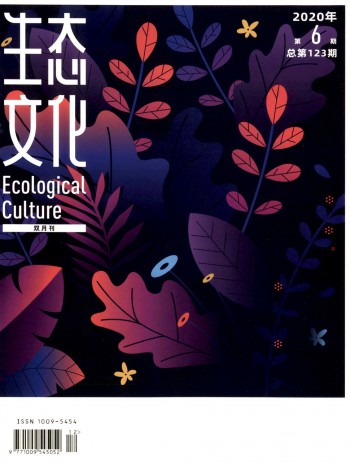
預(yù)計(jì)1個(gè)月內(nèi)審稿 部級(jí)期刊
國(guó)家林業(yè)和草原局主辦
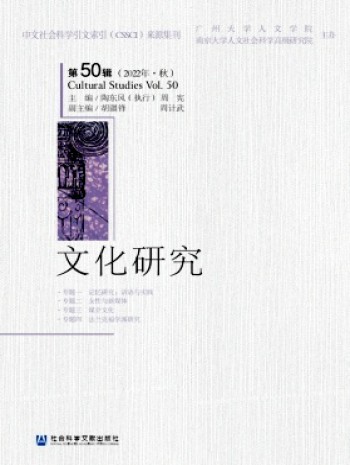
預(yù)計(jì)1-3個(gè)月審稿 CSSCI南大期刊
廣州大學(xué)人文學(xué)院;南京大學(xué)人文社會(huì)科學(xué)高級(jí)研究院主辦
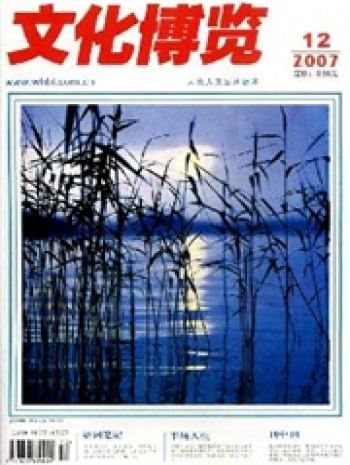
預(yù)計(jì)1個(gè)月內(nèi)審稿 省級(jí)期刊
甘肅省新聞出版局主辦
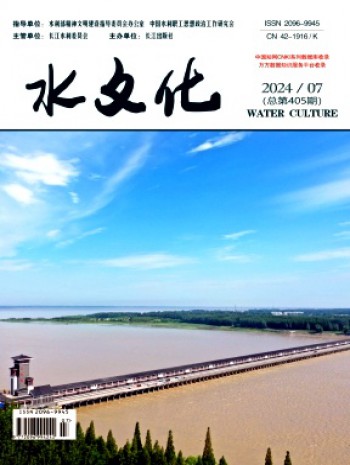
預(yù)計(jì)1個(gè)月內(nèi)審稿 省級(jí)期刊
長(zhǎng)江水利委員會(huì)主辦
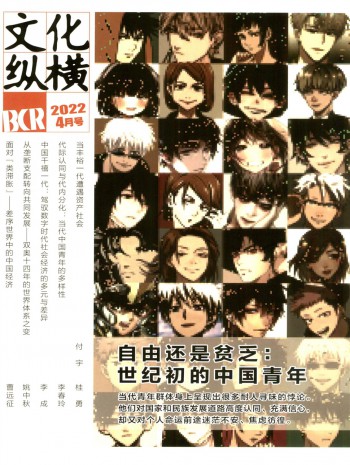
預(yù)計(jì)1-3個(gè)月審稿 CSSCI南大期刊
中國(guó)西部研究與發(fā)展促進(jìn)會(huì)主辦
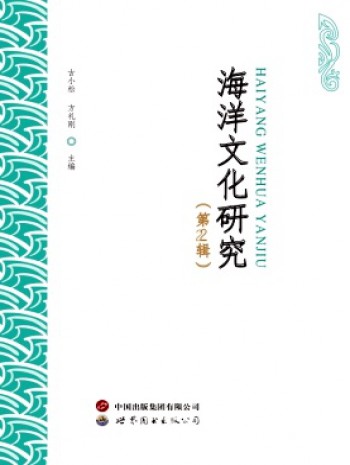
預(yù)計(jì)1個(gè)月內(nèi)審稿 省級(jí)期刊
海南熱帶海洋學(xué)院東盟研究院;海南省南海文明研究基地主辦